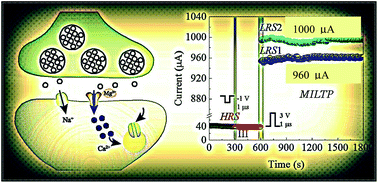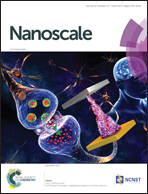Full imitation of synaptic metaplasticity based on memristor devices†
Abstract
Neuromorphic engineering is a promising technology for developing new computing systems owing to the low-power operation and the massive parallelism similarity to the human brain. Optimal function of neuronal networks requires interplay between rapid forms of Hebbian plasticity and homeostatic mechanisms that adjust the threshold for plasticity, termed metaplasticity. Metaplasticity has important implications in synapses and is barely addressed in neuromorphic devices. An understanding of metaplasticity might yield new insights into how the modification of synapses is regulated and how information is stored by synapses in the brain. Here, we propose a method to imitate the metaplasticity inhibition of long-term potentiation (MILTP) for the first time based on memristors. In addition, the metaplasticity facilitation of long-term potentiation (MFLTP) and the metaplasticity facilitation of long-term depression (MFLTD) are also achieved. Moreover, the mechanisms of metaplasticity in memristors are discussed. Additionally, the proposed method to mimic the metaplasticity is verified by three different memristor devices including oxide-based resistive memory (OxRAM), interface switching random access memory, and conductive bridging random access memory (CBRAM). This is a further step toward developing fully bio-realistic artificial synapses using memristors. The findings in this study will deepen our understanding of metaplasticity, as well as provide new insight into bio-realistic neuromorphic engineering.



 Please wait while we load your content...
Please wait while we load your content...